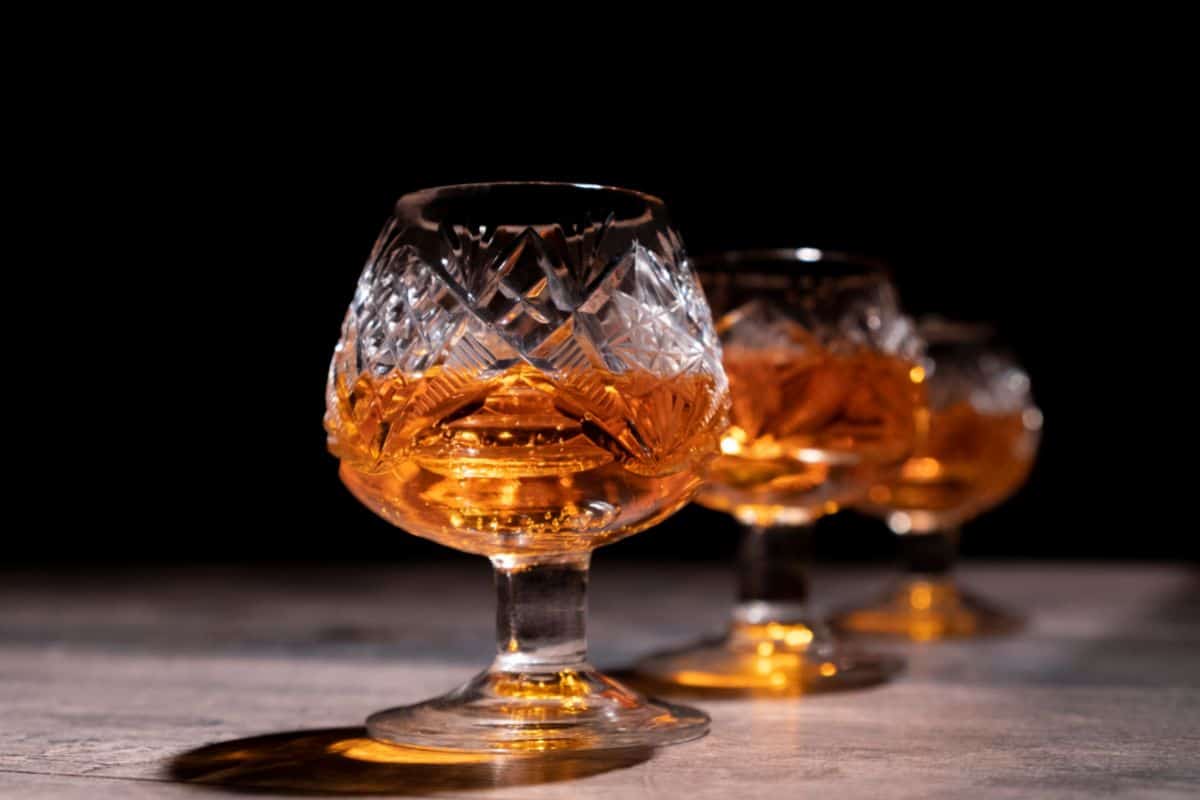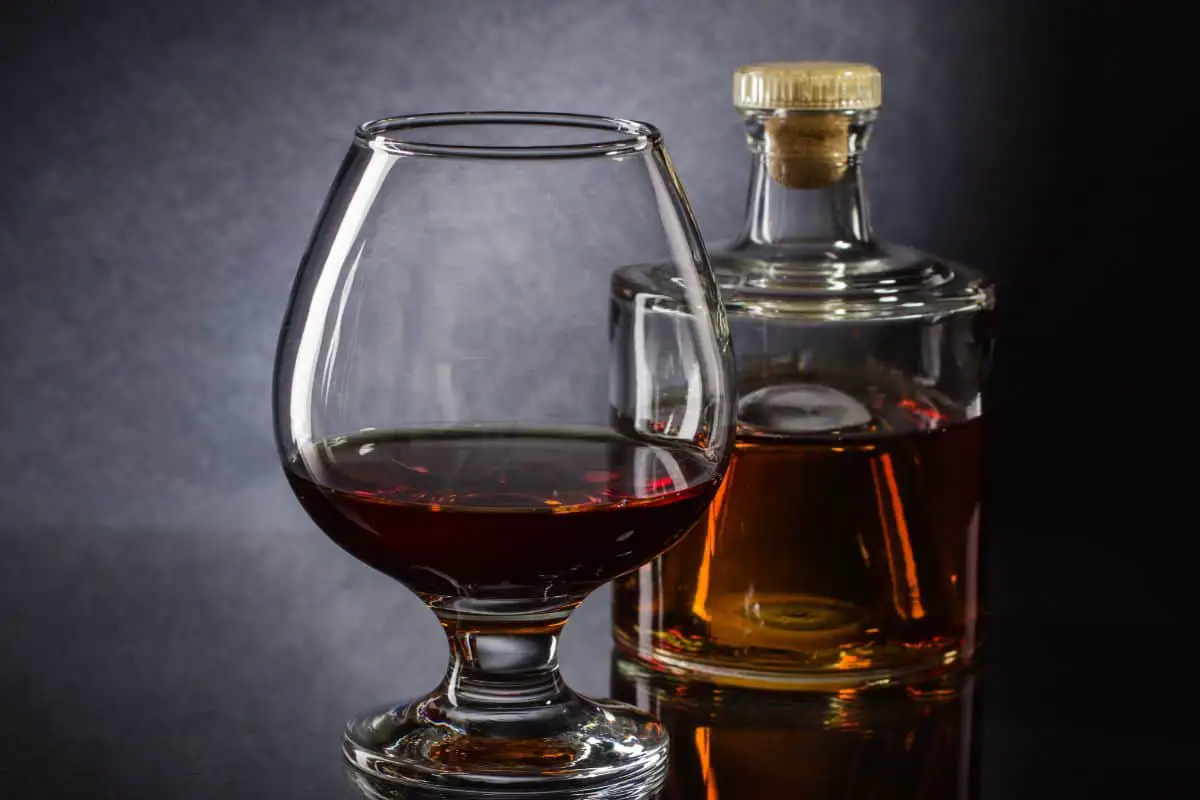There is an enormous amount of alcohol available on the market today, with even more new varieties being created constantly.
Whether it’s a refreshing beer or a tasty wine with your meal, we’re spoiled for choice when it comes to finding an alcoholic beverage to wind down with.

However, while you will surely recognize those types of alcohol, there is another type that frequently pops up again and again that you might not actually understand what it is: cognac.
What is cognac? Well, we’ve got the answers for you.
In our handy guide below, you’ll find out the definition of cognac, as well as detailed information on how it’s created and what its aroma should commonly give off.
Read on!
What Is Cognac?
To begin with, let’s deal with the key question. Cognac is a type of brandy that is named after a commune in France called Cognac.
Brandy itself is a type of liquor that’s made by distilling wine.
Cognac is produced in the wine-growing regions that surround the commune of Cognac, such as Charente.
In fact, a cognac can only bear that name if it meets the production methods that are set out by the Bureau National Interprofessionnel du Cognac. Known as BNIC, they set out standards that have to be met, such as the brandy being distilled twice in copper pot stills, as well as the fact that it must be aged for at least two years in specific barrels. On top of that, they assign a quality grade (that we will cover later).
Like most brandys, cognac is typically enjoyed after eating a dinner, where it is known as a digestif.
When you have it, it’s served neat and your hand warms the drink while you hold the glass in your hand.
What Aromas Does Cognac Give Off?
A large part of drinking fine alcohol is the aromas they give off, which are referred to as the “nose” of the drink.
There are five key aromas that you should get from most cognacs: vanilla, orange, apricot, prune, and caramel.
However, there are many other hints that you can get on top of that, and all contribute to the extremely rich and varied kick you get from a cognac.
There are so many other aromas woven into cognac that some actually divide them into categories, grouping them into seasons that the aromas remind them of.
For example, hints of ginger and coconut bring to mind the season of autumn, as do drops of cocoa and apple.
On the other hand, the feeling of summer is conjured by the aromatic hints of mango and lemon, as well as plum and banana.
As you can see, summer is a time of fruit. For the cold opposite, though, winter is brought alive by bitter hints like coffee and toasted bread.
What Grapes Are Used For Cognac?

As you now know, cognac is a brandy – that’s produced by distilling wine. Wine uses grapes, and therefore cognac uses grapes also.
Cognac is generally made from “ugni blanc” grapes, but the other official main types are folle blanche and colombard.
The ugni blanc grapes help to create acidic wines that are low in alcohol content, anywhere between 7.5% and 10.5%, and the wine needs to be made up of at least 90% of these grapes to be considered a true cru.
Cru is the designation that means a wine is a legally verified product of Burgundy.
Thankfully, then, cognac is usually around 98% made of ugni blanc grapes. On top of that, and the other main grapes, there are a few other types of grape often used.
These include varieties like sémillon, jurançon blanc, and folignan, among others.
Producing Cognac
Once the grapes have been harvested, they are then fermented for about 5 to 7 days.
The wine that comes out is around 8.5% to 9.5% in its alcohol content by volume, which is low. The wine is then distilled twice. How is this done?
Well, a copper pot stills is used, which is like an enormous copper kettle that heats low alcohol liquors.
The copper pot stills help to produce a colorless alcohol that is titled eau-de-vie, which translates from the French to mean “water of life”.
The colorless alcohol is then aged in oak barrels for two years – at least. This is clearly the long-haul, but worth the final product.
However, it can’t just be distilled in any old barrels.
The French oak barrels have to be from either Tronçais and Limousin, otherwise it cannot properly be called a cognac.
The barrel distillation process is known colloquially as “on the wood”, and some manufacturers will let the distillation go beyond the two years.
Once the time has passed by, the cognac from the barrel is then taken and blended with cognacs of other ages and qualities.
This means that you’re getting a whole mix of ages and qualities when you buy a cognac.
However, the label on the cognac bottle will refer to the youngest of the barrel blends.
Grading
As for those labels, they will carry one of the following initialisms, as assigned by the BNIC.
- V.S. – the youngest cognac has been aged for at least two years. Sometimes referred to by three stars.
- V.S.O.P – aged for at least four years.
- Napoléon – aged for at least six years.
- XO – aged for ten years at least.
- XXO – aged for fourteen years at least.
- Hors d’âge – high quality beyond the official age scale.
Final Thoughts
And there you have it! You now know all about how cognac is produced.
It’s a very popular brandy, and one that requires a good deal of aging for its best qualities.
Have a look at the label’s age designation next time you buy one!
- How to Learn Wine Tasting: Essentials for Beginners - March 10, 2024
- How to Learn to Like Wine: Cultivating an Appreciation for the Vintner’s Art - March 10, 2024
- Thanksgiving Sangria: A Flavorful Twist to Your Holiday Table - August 27, 2023
